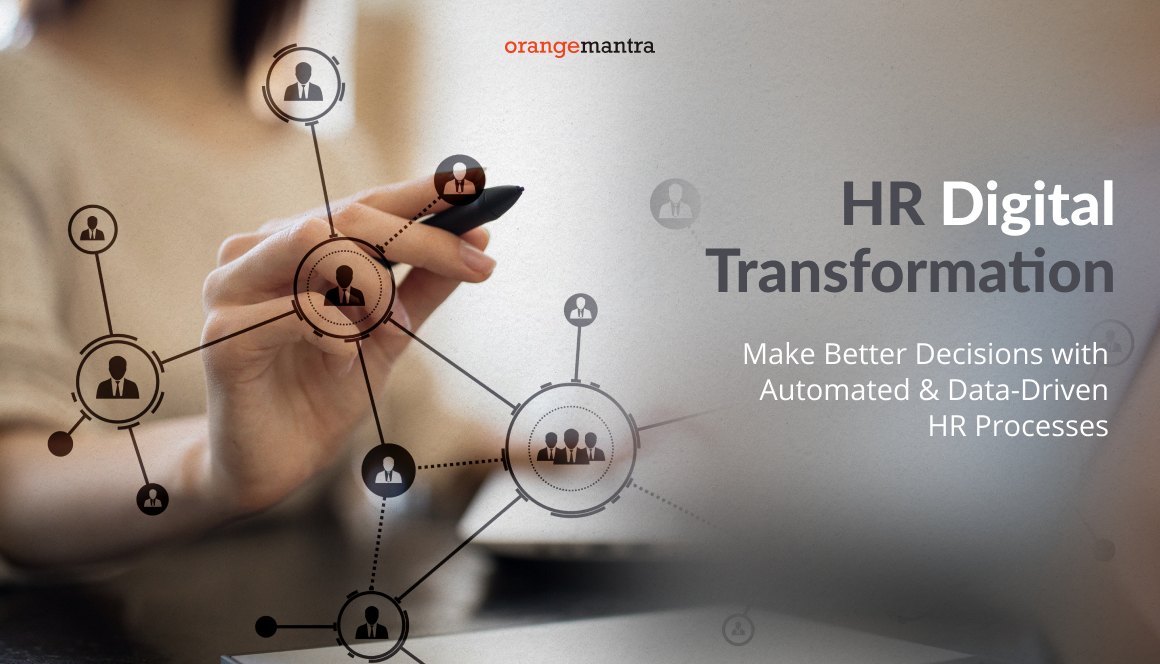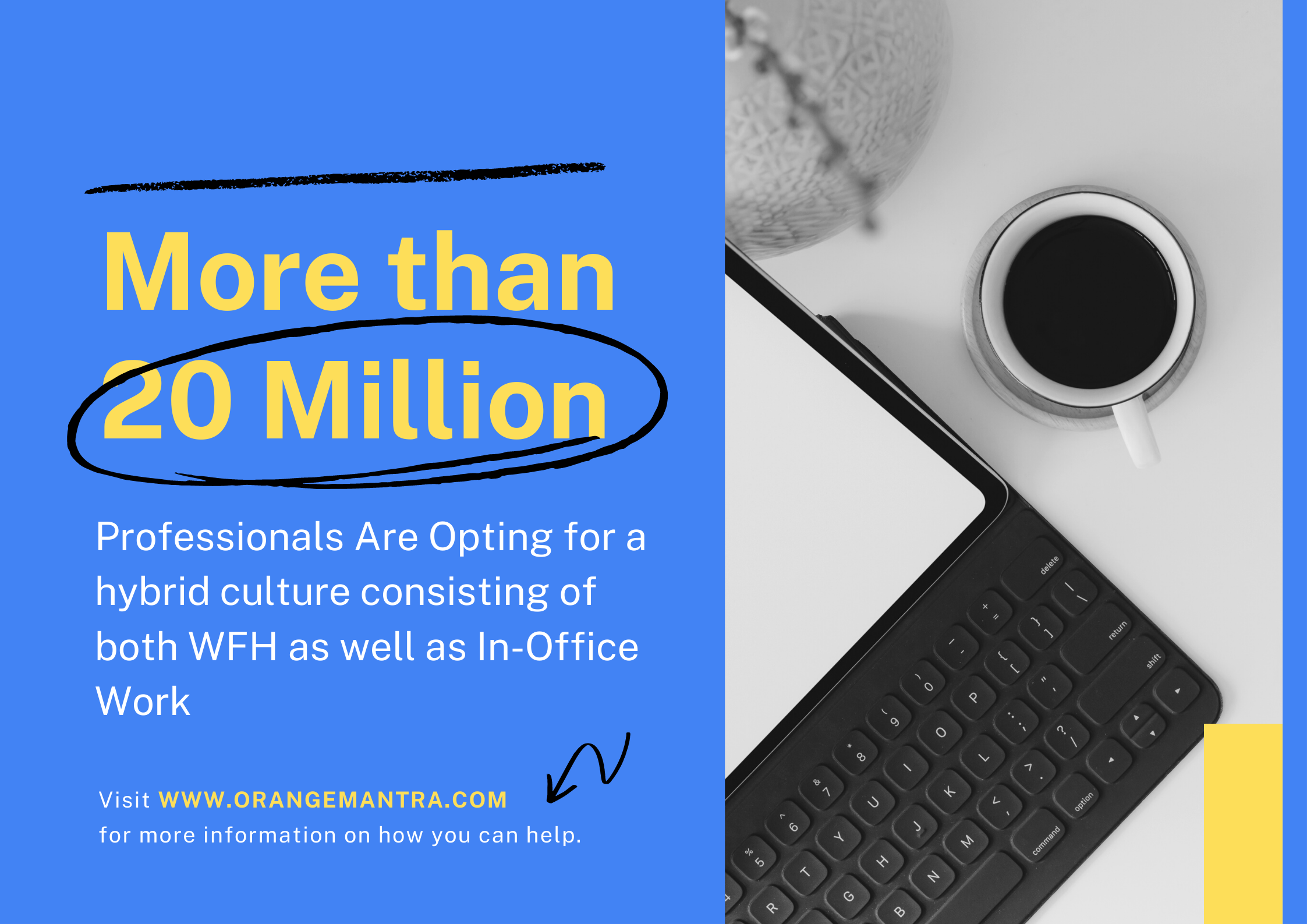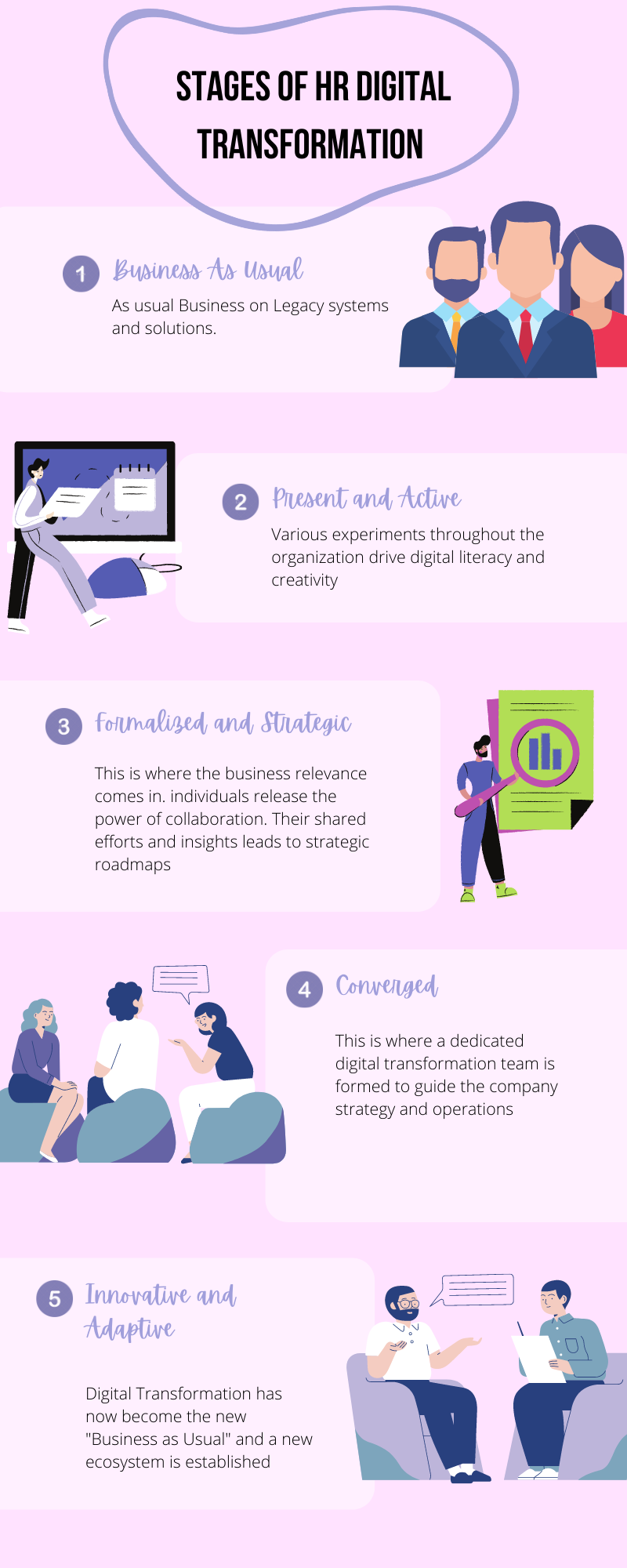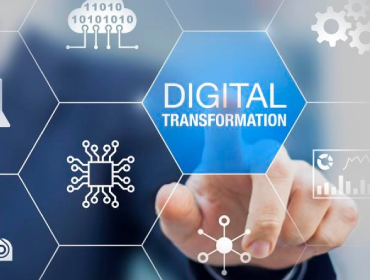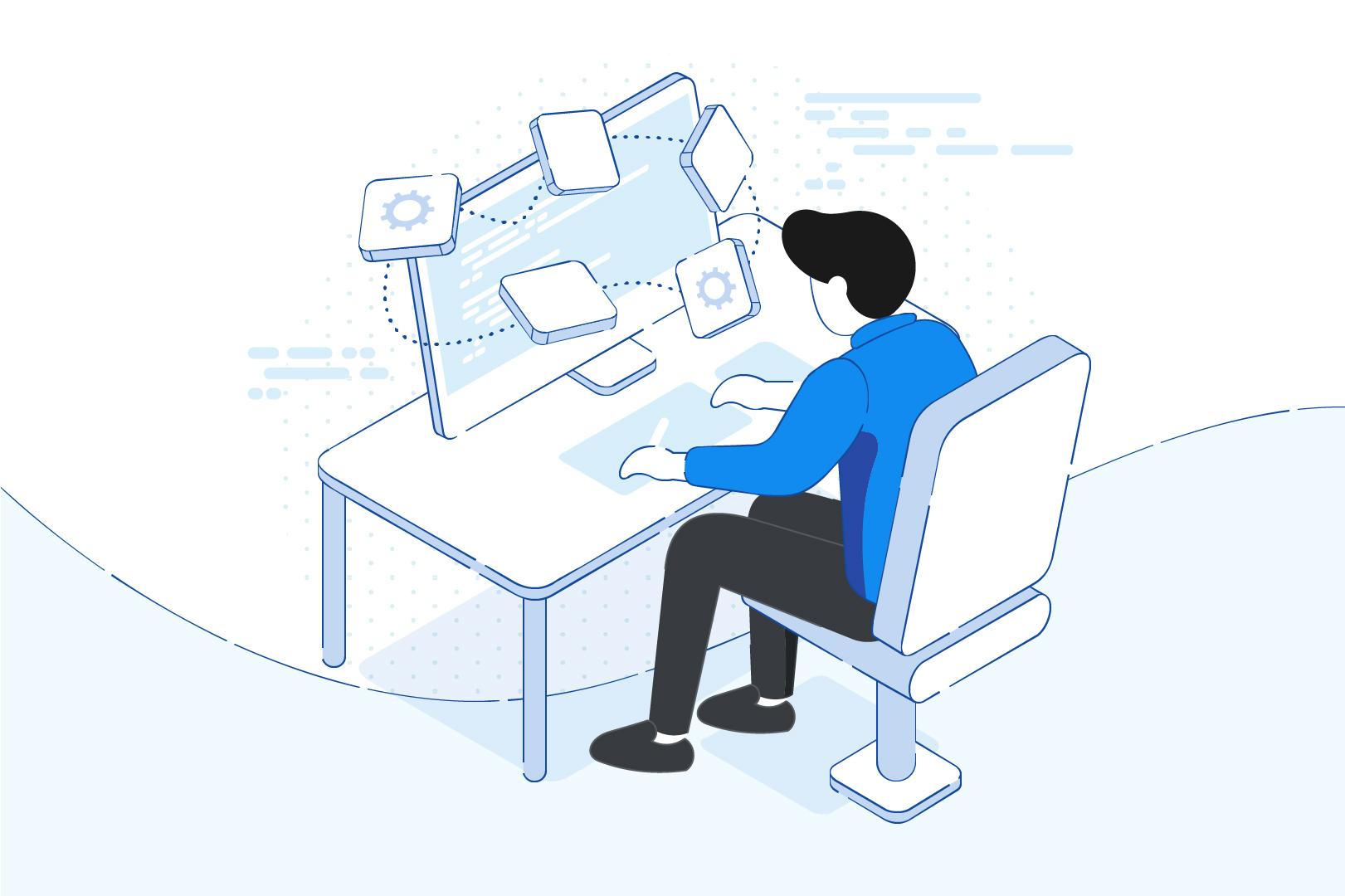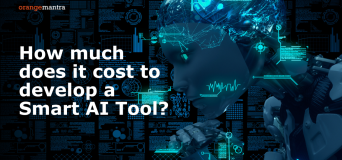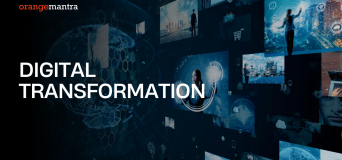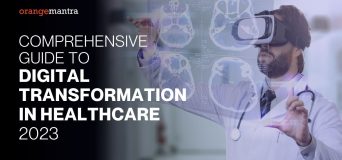The irresistible global pressure in the COVID era is forcing HR digital transformations across industries. While the world of work had gradually begun to evolve before the pandemic, the pace of change has dramatically accelerated during these unprecedented times. This will continue to evolve even after the pandemic, as the way we work and the places we work are going to expand in the future.
Over 20 million professionals will not be going back to the workplace post-COVID, according to the latest Ladders Quarterly Remote Work Report. While some large-scale organizations foresee a return to the office, the majority of professionals wish for remote or hybrid work provisions.
Today, workers have started reassessing their personal and professional priorities. They have refined their priorities as they now have options and are not afraid to use them. Organizations embracing an HR digital transformation are the ones who are going to benefit from this shift in talent.
In the following paras, we will discuss the significance of an HR digital transformation, with a focus on why companies should consider adopting this change—and how.
What is HR Digital Transformation?
Traditional HR operations involve in-person communications, recruitment, and a lot of paperwork for everything from attendance systems, payroll, and performance management to candidate onboarding and management.
HR digital transformation involves shifting those manual processes to technology-based systems. These systems make the operational HR processes automated and data-driven, thereby developing digital capabilities and the impact of HR.
However, deploying technology is neither the only solution nor is the place to start. HR teams must undertake the dual challenge of transforming HR operations as well as the workforce and the way work are done. So, we can say that an HR digital transformation is not only about HR, but also a metamorphosis that involves the whole organization.
Significance of HR Transformation for Organizations
The advantages of digital transformation in HR are countless – enhanced employee experience, simplified and seamless business processes, better data-based decision-making, are just to name a few.
Digital tools help organizations save time, money, and resources as well as improve communication and collaboration, drive productivity, hire top talents, give freedom to employees to work remotely, provide information that can impact business decisions, and a lot more.
When HR teams lead the digital transformation journey that incorporates leadership and employee engagement, they can ensure that the selected digital solutions and operations put workforce and work culture first and that transformation is welcomed by all.
6 Stages of HR Digital Transformation
The various stages of digital transformation in HR can be adapted from Altimeter’s Brian Solis and his in-depth research on the six phases of digital transformation.
Stage 1: Business As Usual
Legacy systems and solutions still exist. Paper-based records, memos, phone calls – all are the preferred modes of communication and recording. Management doesn’t see a need for change and HR teams are at a disadvantage for talent hiring and retention.
Stage 2: Present and Active
Management and HR begin to listen to candidates and attain feedback from employees. HR teams introduce new experiments in HR digital transformation.
Stage 3: Formalized
This is the point where true digital transformation begins. Candidate and employee data impacts business decisions, and efforts are made to identify gaps in data. The entire company collaborates in full swing, with all internal teams participating and leadership support for training and quick adoption of innovative technology.
Stage 4: Strategic
Candidate and employee feedback and data have been assessed, mapped, and distributed across departments. Driving an HR digital transformation involves conducting employee NPS studies and investing in new people, operations, and technologies.
Stage 5: Converged
Onboarding is done for new executive HR talent and companies. Talent hiring, onboarding, learning, and goal journeys are rethought and remapped to incorporate pragmatic “micro-moments.” As a result, companies witness significant improvements in employee performance, satisfaction, and retention.
Stage 6: Innovative and Adaptive
Digital transformation is not just meant for HR. It is the heart of a company that drives enhancements in product development, engineering, marketing, sales, business service, and of course HR. An innovative and digital team continually monitors new technological developments to discover new opportunities for further enhancements.
Things to Consider Before You Make a Move
Like any other major change, digital transformation in HR must commence with a shift in the mindset of workers. While business as usual is an easy to implement, you should first make up your mind that this change is the need of the hour and worth the effort. Besides receiving benefits for your organization, incorporating new workplace change on a personal level can result in:
- Enhancement in your employee value. Leaders who bring change and disruption are always in demand.
- Increment in your workplace satisfaction as you visibly notice the outputs of your work and valuable impact on your organization.
- Easy and smooth management of future transitions. You work more proactively towards your goals, which eliminates stress and improves results.
- Ongoing relevance and success. Adapting to change is an inevitable and ongoing process that generates new business opportunities.
- Enhancements in skillset crucial for career and personal growth, including enhancements in:
- Communication
- Problem-solving
- Relationship building
- Out-of-the-box, strategic thinking
- Teamwork
- Organization and productivity
How Do You Go About the Process of an HR Digital Transformation?
Always remember, there’s no one-size-fits-all strategy to digital transformation in HR. Every organization is different and has its own set of requirements. However, there are some stages that all organizations need to go through as they embark on their digital transformation journey.
Step 1 – Identify your business goals and how you’re going to measure your success.
Step 2 – Know where you’re standing and what the key areas of improvement are in your business-critical systems, processes, and work culture.
Step 3 – Establish open communication with management, HR, and employees. Make sure all are on the same page to know the outline of goals, status, places for improvements. Share some ideas for bringing digital transformation in the other areas of the company and hire interested parties before you move ahead.
Step 4 – Create an action plan for your new HR system – how it should look and function and how it is going to address the areas for improvement. You need to ensure that the selected digital tool suffices the needs of the whole company.
Step 5 – Consult with leadership and employees to obtain relevant feedback and tweaks.
Step 6 – Implement your action, deploy new HR tools and processes, and start using them.
Step 7 – Track and measure the progress of your HR digital transformation over time and make sure that it is continually meeting the needs of your candidates, employees, and organization.
Lastly, you need to actively look for adjustments to candidate and employee requirements and desires and figure out ways to address them.
Use Cases of an HR Digital Transformation
If you’re an action-oriented leader, here are some examples of digital transformation in HR that you can choose from and get started.
-
Digital Onboarding
Great digital onboarding is strategic, well-structured, and ensures that new employees feel welcomed, get oriented, supported, and fully equipped to deliver the best results.
-
Employee Self-service Portals
Accessible employee self-service portals can answer questions of employees and candidates. They no longer need to depend on their colleagues for company information, including basic HR information.
-
People Analytics
People analytics is a system of data-based decision-making to HR operations for enhancing employee engagement, performance, and productivity. Companies can leverage the people analytics tool to make well-informed decisions about talent management, recruiting, retention, succession planning, and more.
-
Digital Adoption Platforms
Digital adoption platforms offer a highly interactive way to learn when working leveraging step-by-step guidance on the features frequently used by your employees.
They serve as an effective tool for analyzing usage, automating processes, and enhancing user experience.
-
AI-enabled Applicant Tracking System
An AI-enabled applicant tracking system employs automated filters based on relevant keywords, years of experience, skills, qualifications, etc. to remove unqualified applicants from the process before anyone views the application.
ATS ensures that all candidates are hired justly and consistently by pushing qualified candidates forward, irrespective of gender, age, or ethnicity.
-
Recruiting Chatbots
AI-powered recruiting chatbots save a lot of time for recruiters and applicants. These tools interpret conversational language sent by an applicant and send automated replies, thereby effectively fulfilling manual tasks such as:
- Scheduling interviews
- Collecting automated screening answers
- Responding to those visiting your career pages and directing them to the right recruiter if the profile matches the requirement.
- Hiring talents via text, which is best to use at career fairs, presentations, in print ads, and so on.
- Answering candidates’ queries related to application status, benefits, etc.
-
HR Chatbots
Using HR chatbots, HR teams can create auto-replies to instantly address some of the frequently asked queries and concerns. These chatbots can also asynchronously gather employee data as required.
Final Thought
In this pandemic world, an HR digital transformation isn’t optional anymore. As the pandemic has accelerated the pace of digitalization in every field, it’s high time that organizations should consider driving HR change in 2022 and beyond.
By moving traditional HR processes like recruitment, payroll, succession planning, etc. to cloud-based HR systems, companies can enjoy reduced time to fetch operational reports, easy access to business intelligence, and enhanced employee engagement and satisfaction.
As a leading provider of digital transformation services, OrangeMantra extends its support to all the action-oriented leaders who want to bring an HR digital transformation into their organizations to generate the best results. Partner with us to witness a successful digital transformation in your organization.
FAQs
1. What factors does one need to consider for successful digital transformation?
Before you make a move towards digital transformation in HR, make sure to consider the following factors:
- A definite goal
- Buy-in from all stakeholders,
- Measurement of the performance of digital transformation initiatives.
2. How do I get started with an HR digital transformation?
For a successful HR digital transformation journey, you need to:
- Set a clear goal
- Get everyone on board
- Keep everything simple and easy
- Prioritize ideas and feedback
- Evaluate performance
- Set up the right culture
